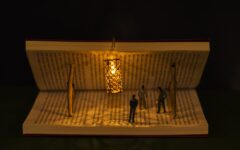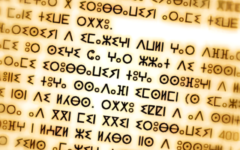Imaginary and the Real in Arabic Narrative: A Contemporary Critical Perspective – Applied Case Study
30 June 2025 2025-07-07 4:25Imaginary and the Real in Arabic Narrative: A Contemporary Critical Perspective – Applied Case Study

Imaginary and the Real in Arabic Narrative: A Contemporary Critical Perspective – Applied Case Study
This study explores the intricate interplay between the imaginary and the real in Arabic narrative through the lens of contemporary literary criticism. Focusing on the narrative elements of character, time, and space—core components of any storytelling structure—the research highlights how these elements are interwoven to construct meaning and evoke layered interpretations. The novel The Tales of Jabir the Shepherd serves as a central case study, offering a fertile ground for examining how narrative techniques blur the boundaries between the real and the imagined. In this context, the setting becomes a dynamic space that not only frames the narrative but also deepens the symbolic resonance of events. Time, in particular, emerges as a fragmented and elusive construct: it is neither strictly linear nor anchored in reality, but rather presented as a fluid sequence shaped by memory and perception. This treatment of time challenges the reader to navigate a dual temporality, caught between historical reality and fictional invention. The study addresses the following research question: What are the limits of the intersection between the imaginary and the real in Arabic narrative, and how can real events be narrated through imaginative frameworks? To answer this, an analytical-critical method is employed, focusing on the narrator’s perspective and the temporal strategies used to destabilize the reader’s sense of realism. Ultimately, the study demonstrates how Arabic fiction reconfigures time and space to craft narratives that resonate both emotionally and intellectually, inviting readers into a suspended realm between fact and imagination
Dr. Hicham Miri
Related Posts
Search
Categories
Popular Tags






